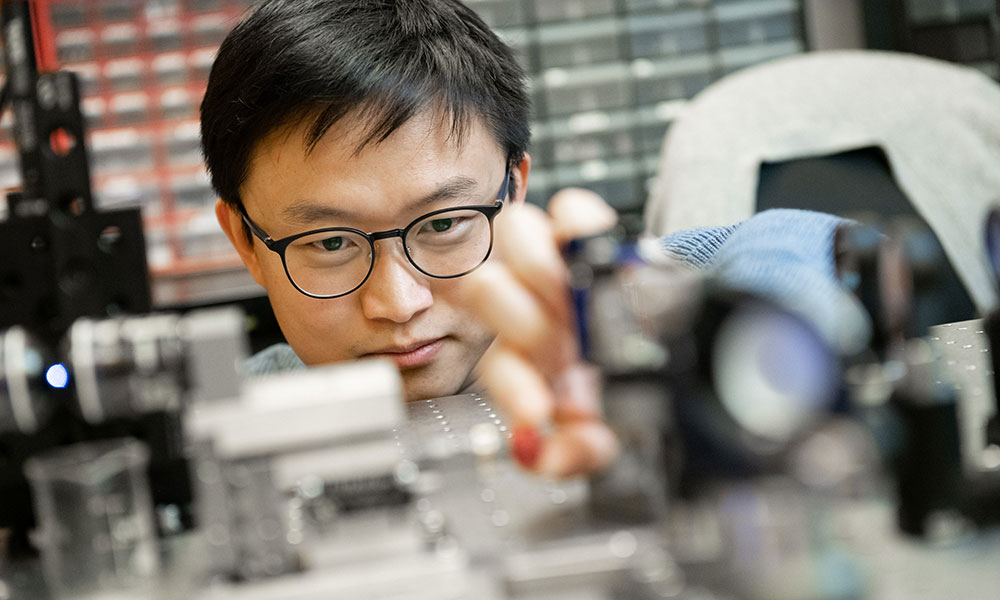DESPITE DECADES OF STUDYING CHEMICAL INTERACTIONS between cells, scientists still know very little about how cells interact physically. How do cells’ physical movements, for instance, affect pathological processes in diseases, like cancer, in our bodies?
Dr. Isaac Li, an emerging leader in his field, is looking for answers.
“These physical interactions underpin a lot of processes that we’re just beginning to understand,” explains the Assistant Professor and Canada Research Chair in Single-Molecule Biophysics and Mechanobiology (Tier 2). “The problem with these forces—which push, pull and stick together—is that they happen on an incredibly small scale and are difficult to observe.”
As a visual person, Dr. Li was driven to translate these abstract forces into images so researchers could better understand them. Using specialized DNA-based molecular tools that change shape with force, Dr. Li is able to directly show these forces in action, under the microscope.
“For the first time, people can visualize processes that weren’t visible before.”

Though Dr. Li teaches chemistry, many of the questions asked by his research are biological. His work combines biology, biochemistry, biophysics, nanotechnology and bioengineering.
The impacts of visualizing cells’ physical interactions are far-reaching.
Investigating the physical touch between cells will guide a better understanding of how various diseases, including cancer, progress through the body. Eventually, Dr. Li hopes his research will lead to new strategies for treating these diseases through targeting and controlling the physical interactions.
“Often the approach is to find one molecule responsible for causing something bad and kill it,” says Dr. Li. “But biology is more complicated than that—what if we don’t kill it, but instead find it and manipulate it? Maybe it can actually help.”
He says the DNA-based tools he and his team have created to probe these processes also have the potential to enable other technologies that haven’t even been conceived.
“One hundred years ago they were studying quantum mechanics with no idea it would one day be applied to quantum computing,” says Dr. Li. “We’re advancing a body of knowledge so others can pick it up and take it from here.”
When he chose UBC Okanagan for his research, Dr. Li was drawn to the enthusiasm within his department. “I’m attracted to people and colleagues who I can collaborate with, and I think that’s what brought me here.”
In his time at UBCO, Dr. Li has found the campus’s intimate size and interdisciplinary environment allow him to easily collaborate with diverse faculty members who can benefit from his imaging methods and DNA-based tools.
Dr. Li’s research has flourished in this collaborative environment, earning him the recognition of UBC Okanagan’s 2023 Researcher of the Year for Natural Sciences and Engineering.
“I was quite humbled,” he says about his Researcher of the Year win. “I wouldn’t be here without all the support of so many people.
The post Examining single molecules for infinite possibilities appeared first on UBC Okanagan News.